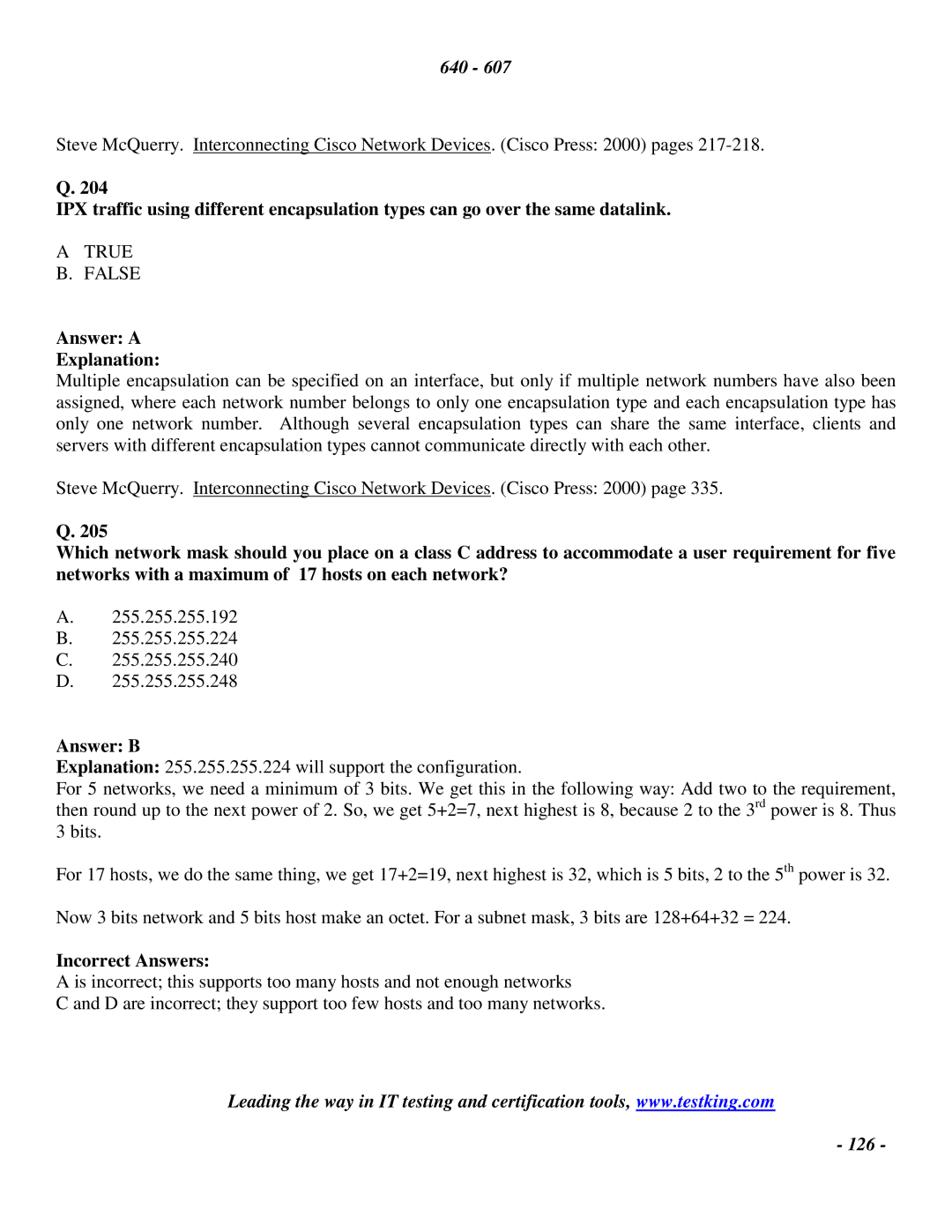640 - 607
Steve McQuerry. Interconnecting Cisco Network Devices. (Cisco Press: 2000) pages
Q. 204
IPX traffic using different encapsulation types can go over the same datalink.
ATRUE B. FALSE
Answer: A
Explanation:
Multiple encapsulation can be specified on an interface, but only if multiple network numbers have also been assigned, where each network number belongs to only one encapsulation type and each encapsulation type has only one network number. Although several encapsulation types can share the same interface, clients and servers with different encapsulation types cannot communicate directly with each other.
Steve McQuerry. Interconnecting Cisco Network Devices. (Cisco Press: 2000) page 335.
Q. 205
Which network mask should you place on a class C address to accommodate a user requirement for five networks with a maximum of 17 hosts on each network?
A.255.255.255.192
B.255.255.255.224
C.255.255.255.240
D.255.255.255.248
Answer: B
Explanation: 255.255.255.224 will support the configuration.
For 5 networks, we need a minimum of 3 bits. We get this in the following way: Add two to the requirement, then round up to the next power of 2. So, we get 5+2=7, next highest is 8, because 2 to the 3rd power is 8. Thus 3 bits.
For 17 hosts, we do the same thing, we get 17+2=19, next highest is 32, which is 5 bits, 2 to the 5th power is 32.
Now 3 bits network and 5 bits host make an octet. For a subnet mask, 3 bits are 128+64+32 = 224.
Incorrect Answers:
A is incorrect; this supports too many hosts and not enough networks
C and D are incorrect; they support too few hosts and too many networks.
Leading the way in IT testing and certification tools, www.testking.com
